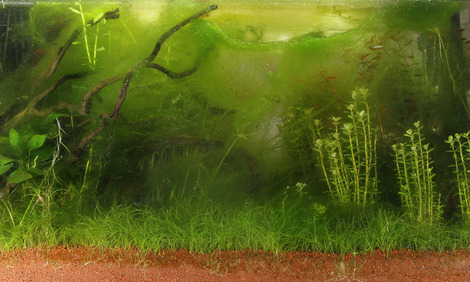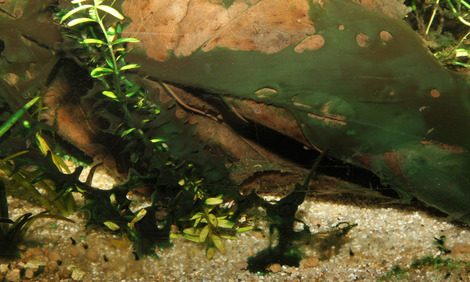How To Fix Algae In Aquarium

Algae can make your aquarium look very unsightly. They can overgrow your plants and decorations and restrict your fish's habitat. But it is not that difficult to prevent or get rid of algae!
Why are algae a problem at all?
Algae belong in the aquarium as much as other water organisms. You can't totally prevent their occurrence. As long as the algae growth remains low or it doesn't noticeably gain the upper hand there is no need to worry. Strong algae growth, however, has a dramatic effect on the water: Algae are plants and produce oxygen during the day. But at night the situation reverses and the algae consume oxygen. With a heavy algae infestation the oxygen can drop into dangerous ranges at night and threaten the life in the aquarium. It is then advisable to aerate at night.
Exposed to light (during the day), the algae continue to consume carbon dioxide (CO2) like the water plants. This consumption can lead to an extreme increase in the pH level (pH > 9), which in turn leads to a life-threatening environment.
If the CO2 content in the water is no longer sufficient, algae are able to dissolve the CO2 out of the carbonate hardness (KH). The result is a decrease of this important water parameter which leads to an unstable pH level. The pH level drops significantly at night (to values as low as 4) and rises during the day to far too high values (up to values over 10), and this can mean the death of the aquarium dwellers.
Finally it is worth mentioning that dying algae are broken down by bacteria during oxygen consumption. Therefore the water needs to be aerated additionally when algae die!
Why do algae sometimes grow so much?
Algae are plants and grow especially strongly when lots of nutrients and light are available. With the help of water tests you can check how much of the main algae nutrients phosphate and nitrate are present. It is important for you to find out why such a strong excess of nutrients occurred. Mostly the cause is overfeeding, an insufficient partial water change or too high fish stock combined with too few plants.
Determine the food sources of the algae
Nitrate (NO3) and phosphate (PO4) promote the algae growth in the aquarium, if the following values are exceeded:
Nitrate: 5-10 mg/l ( JBL Nitrate Test NO3 )
Phosphate: 0.1 mg/l ( JBL Phosphate Test sensitive )
How to remove the algae nutrients
To remove nitrate in the aquarium use JBL BioNitratEx (biological long-term solution) or JBL NitratEX : immediate instant solution.
To remove phosphate in the aquarium: either with special filter material ( JBL PhosEX ultra ) or with liquid preparation JBL PhosEx rapid .
Phosphate/nitrate ratio

Scientific studies have shown that the phosphate/nitrogen ratio has a large influence on the algae growth. The ideal ratio for freshwater plants is 1:16 (converted to phosphate/nitrate it would be about 1:10).
Outside this range, which ranges from 1:15 to 1:30, the algae growth increases significantly, especially this from blue-green algae (cyanobacteria).
How To Fix Algae In Aquarium
Source: https://www.jbl.de/en/areas/section/94/algae-control
Posted by: malcolmcoging.blogspot.com

0 Response to "How To Fix Algae In Aquarium"
Post a Comment